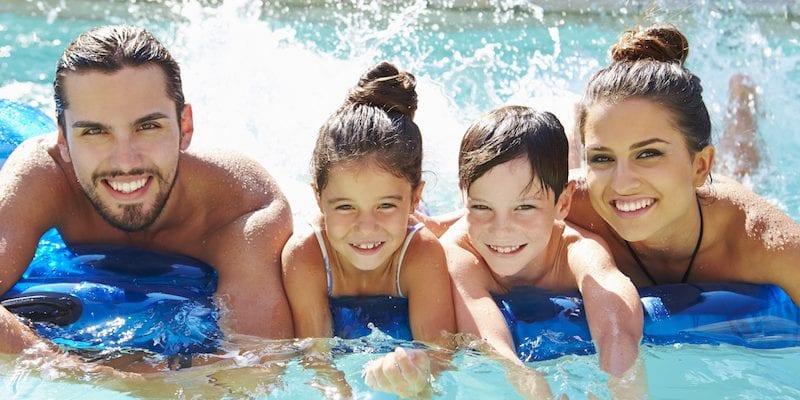Children are drawn to water, especially toddlers. Whether it’s the toilet, bathtub, swimming pool, puddles, buckets of water, or something else, their curiosity drives them to explore.
Child safety is important in every circumstance, and it rises to a new level when it comes to pool safety. Here are five tips to help you protect your child and prevent drowning.
- Supervise
It only takes a second or two for a child to get themselves into a troubling situation like falling or getting into the water when you’re not looking. Constant adult supervision is crucial and key to preventing a drowning. Never leave your child alone or with another child around the pool.
Social gatherings can get hectic, but avoid getting distracted and maintain contact with your child when they are around a swimming pool or the water. Adults can take turns at social gatherings watching kids. Avoid letting an adult who is under the influence of drugs or alcohol watch your kids around the pool.
- Eliminate Hazards
What is a drowning hazard? Buckets of water, a full bathtub, or any container large enough for a child to get into or stick their head into is a drowning hazard. Always empty your bathtub when it’s not in use and never leave buckets or containers of water laying around inside or outside the house.
- Water Awareness
- Swimming Lessons – Children should be taught how to respect the water and to swim from an early age. Children love to swim, so early swimming lessons are a good start, but swimming lessons alone don’t prevent drowning.
- Flotation Aids – These are good tools to use to help them learn to swim, but you shouldn’t rely on them to prevent drowning.
- Remove Toys – Don’t leave toys in the water as that is a temptation most young children cannot resist. They want to go get that toy no matter where it is.
- Cover Drains – Don’t let children play around pool or spa drains because the suction of these drains could entrap their hair, arm, leg, or clothing, which can result in injury or drowning. Cover pool and spa drains with proper drain covers and consider having multiple drains installed to reduce the suction power.
- Learn CPR
Preventative measures are important to your plan to prevent drowning. To go an extra step, learning CPR (cardio-pulmonary resuscitation) and keeping your training regularly updated will save a life. In an emergency, CPR could be the difference between life and death.
- Install a Pool Fence
Restricting access to a swimming pool with a fence or border is a NSW regulation and therefore a mandatory measure when you have a pool that meets certain specifications.
If you’re in doubt, get a pool certification from HouseCheck NSW professionals to ensure you are taking all the right measures to prevent a drowning in your pool.
NSW requires that your pool meets the Australian Standard for pool fencing:
- It must be at least 1200mm tall.
- Gaps in slatted fences should be no wider than 100mm.
- The fence must be in good repair and well-maintained.
These are the basic regulations, but there are others required for fencing your pool in NSW so that you are in compliance.
These five tips can prevent a drowning in your pool, at the beach, inside your home, or at someone else’s home. They are crucial to the safety and wellbeing of children when they are around water.
If you have a swimming pool and you’re not sure if it’s safe and regulation-compliant, contact HouseCheck NSW for a free quote here: https://www.housechecknsw.com.au/contact-us/ .

